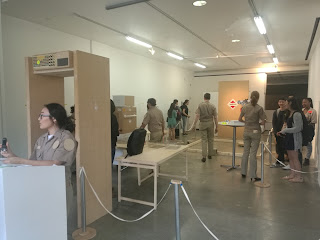Week 4 - MedTech + Art
This week's topic reminds me of a movie I once saw, Never Let Me Go (2010). The movie is based on Kazuo Ishiguro's novel with the same name, and features the love and friendship between the cloned people in a future dystopian society. The main characters Kathy, Ruth and Tommy were born to donate their organs, and are doomed to die in their early twenties due to organ donation. They have known each other since they were kids in a school for clone people, and their friendship and love continues till their death. The courage those people had towards their fate and to their love are both moving and philosophical. One particular plot in the movie that intrigues me involves with Tommy trying to obtain a deferral of donating his organs by showing his creativity in his artworks, but is told that the point of collecting artworks from the cloned people is not to select who deserves to live but to investigate if cloned people have souls at all. The school they had spent t
